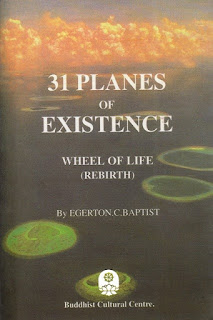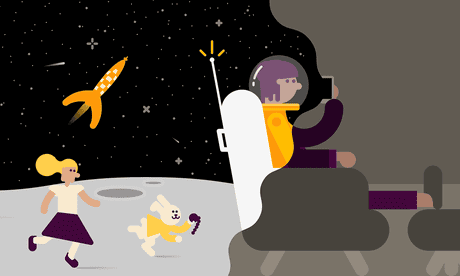), when we celebrate the summer solstice. But Nature doesn't know that. It's balmy in Los Angeles with so much sunshine that it's hard to frown. Today at the Rose Bowl, home of big time corporate football games and concerts, it was a day of vegan food and drink. And I got to thinking about the competing ideals in the two Buddhisms (traditional Theravada and modern Mahayana).
The
arhat ideal [to gain enlightenment using a
buddha's teaching] and the
bodhisattva ideal [trying to become a
buddha and suffer as a martyr/savior (
Messiah/
Maitreya) for aeons trying to rediscover the path the Buddha has now made known long after it is lost to the world] are often considered the
respective guiding ideals of Theravāda Buddhism and Mahāyāna Buddhism.
But this assumption is not entirely correct, for the Theravāda tradition has
absorbed the bodhisattva ideal into its framework and so recognizes
the validity of both arhatship (the path of discipleship) and
buddhahood (
making vows and pretending for one lifetime to be on a quest for enlightenment with the ability to teach a path eventually discovered) as objects of
aspiration.
It would therefore be more accurate to say that the arhat
ideal and the bodhisattva ideal are the respective guiding ideals of
Early Buddhism and later Mahāyāna Buddhism.
"Early Buddhism" does not mean
the same thing as Theravāda Buddhism, which exists today in the countries of Southern Asia (Burma, Cambodia, Laos, Sri Lanka, Thailand, and elsewhere in small pockets such as India, Indonesia, Bangladesh, and Vietnam).
 |
| The Buddha's final reclining into nirvana or Maha-parinirvana, Gandhara 2-3rd century. |
.
"Early" means the type of Buddhism embodied in the archaic
Nikāyas ("Volumes," ancient sacred Buddhist texts) of Theravāda Buddhism and in the corresponding texts of other
schools of Indian Buddhism that did not survive the general destruction
of Buddhism in India [by Islam from without and Brahmins from within].
It is important to recognize that these ideals, in the forms that
they have come down to us, originate from different bodies of literature
stemming from different periods in the historical development of
Buddhism.
If we fail to take this fact into account and simply compare
these two ideals as described in Buddhist canonical texts, we might
assume that the two were originally expounded by the historical Buddha
himself -- which they were not.
And we might then suppose that the Buddha -- living and
teaching in
Scythia and the
Ganges Plain in the 5
th century BCE --
offered his followers a choice between them, as if to say: "This is the
arhat ideal, which has such and such features, and that is the
bodhisattva ideal, which has such and such features. Choose whichever
one you like."
- [NOTE 1: There is also a third model of the Buddhist spiritual life, that of the nonteaching buddha or paccekabuddha.
This is similar in many respects to the disciple arhat,
except that the disciple arhat attains enlightenment under the
guidance of a buddha, whereas the nonteaching buddha gains enlightenment without any
outside guidance. Otherwise, the qualities that
constitute this type is essentially the same as a teaching buddha. In the literature of the
Buddhist systems, one often comes across three types of "enlightened ones" -- sāvakas, paccekabuddhas, and sammā-sambuddhas (Sanskrit śrāvakas, pratyekabuddhas, and samyak-sambuddhas) -- and of the three vehicles (yānas) that lead to these attainments.]
 |
| American scholar-monk Bhikkhu Bodhi |
The apocryphal Mahāyāna sūtras, such as the "Great Perfection of Wisdom Discourse" (
Mahāprajñā-pāramitā Sūtra) and the "Lotus Sutra" (
Saddharmapuṇḍarīka Sūtra), give the impression that the
Buddha
did teach both ideals.
Such "sūtras," however, certainly
are modern writings, not ancient archaic records of the Buddha's words. To the contrary, they are relatively late attempts to
schematize the different types of Buddhist practice that had evolved
over a period of roughly 400 years after the Buddha's
final passing into nirvana (
parinirvāṇa).
The most ancient Buddhist texts -- the Pali language
Nikāyas [keeping in mind that Sanskrit was strictly the exclusive language of the
Brahmin priests and their
Vedas or "Knowledge Books," which the Buddha rejected and therefore spoke in the language of the people: Magadhi, Prakrit, possibly
Pali or certainly some variation of it] and their
counterparts from other early schools (some of which have been preserved
in the Chinese "scriptures" or
Āgamas and the Tibetan "translation of the word" or
Kanjur) -- depict the ideal for
the Buddhist disciple as the arhat.

The Mahāyāna sūtras, composed a
few centuries later in a
Buddhist Hybrid Sanskrit, depict the ideal for
the Mahāyāna follower as the bodhisattva.
Now some people argue that
because the arhat is the ideal of Early Buddhism, while the
bodhisattva is the ideal of later Mahāyāna Buddhism, the Mahāyāna must
be a more advanced or highly developed type of Buddhism, a more ultimate
teaching compared to the simpler, more basic teaching of the historical Buddha (Shakyamuni) and the
Nikāyas.
That is indeed an attitude common among Mahāyānists, which one might well call
"
Mahāyāna elitism."
An opposing attitude common among conservative
advocates of the
Nikāyas rejects all later developments in the history
of Buddhist thought as deviation and distortion, a fall away from the
"pristine purity" of the ancient teaching.
One might call this attitude "
Nikāya
purism." Taking the arhat ideal alone as valid,
Nikāya purists reject
the bodhisattva ideal, sometimes forcefully or even aggressively.
In seeking a point of view that can do justice to both
perspectives, that of the
Nikāyas and the early Mahāyāna sūtras, a point
of view that can accommodate their respective strengths without falling
into a soft and easy
syncretism, without blotting out the conflicting conceptual
differences between them.
How can this be done without abandoning faithfulness to the
historical records in a way that also recognizes that these records
are by no means crystal clear or likely to be free of bias.
This
task is not easy. It is much simpler to adopt either a
standpoint of "
Nikāya purism" or one of "Mahāyāna elitism" and hold to
it unflinchingly. The problem with these two standpoints, however,
is that both are obliged to neglect facts that are discomforting to
their respective points of view.
Ordained as an American Theravāda Buddhist monk, this paper by Bhikkhu Bodhi is not to defend the opinions of any particular school of
Buddhism or trying uphold a sectarian point of view.
For six years, having lived in Chinese Mahāyāna monasteries, with an understanding of
Buddhism particularly enriched by contact with the teachings
of the Chinese scholar-monk Master Yinshun (1906-2005) and his most
senior living pupil, Master Renjun, the founder of Bodhi Monastery in
New Jersey [where Bhikkhu Bodhi resided when he returned from Asia] -- Bhikkhu Bodhi's first purpose is to draw out from the texts what they say explicitly, and
also what they imply, about these two
competing ideals of the Buddhist life.
In the end, when conclusions are drawn, they will be clearly stated as such, and they will be
entirely his own.
More






























































































































































































































































































